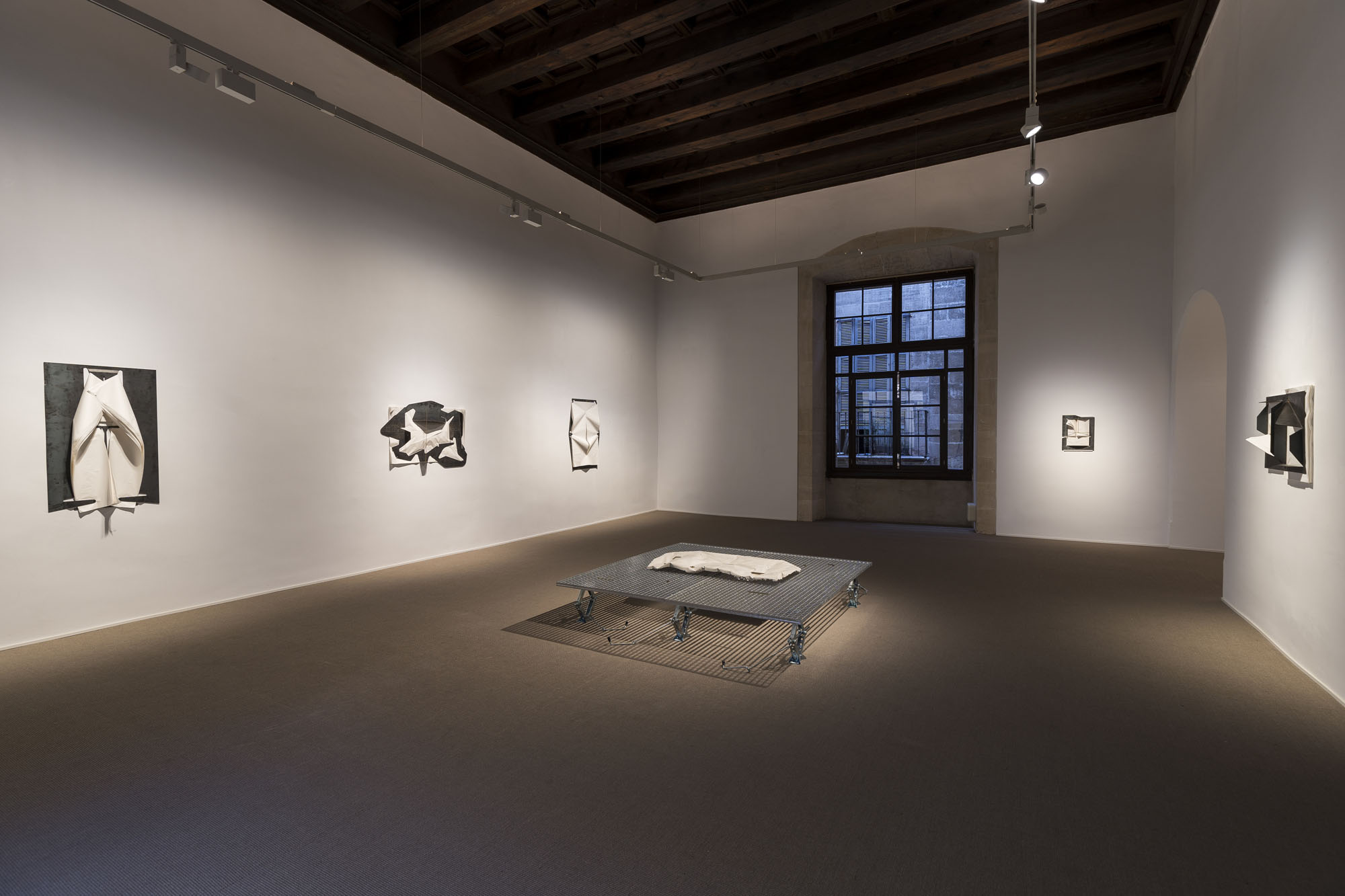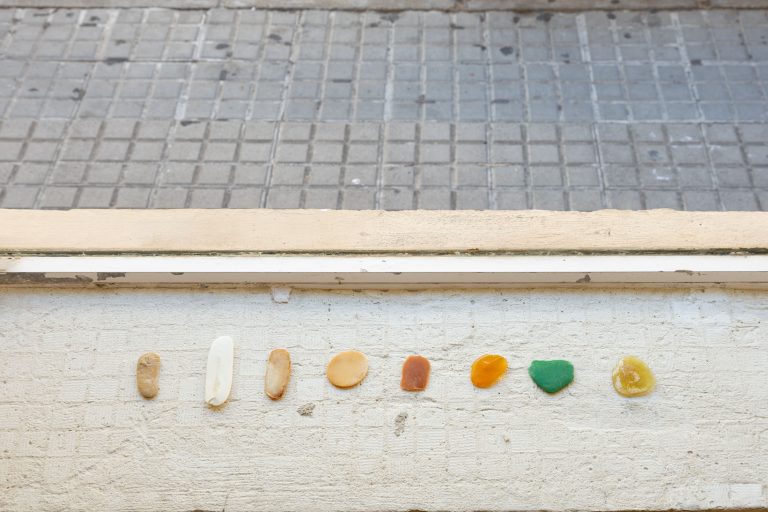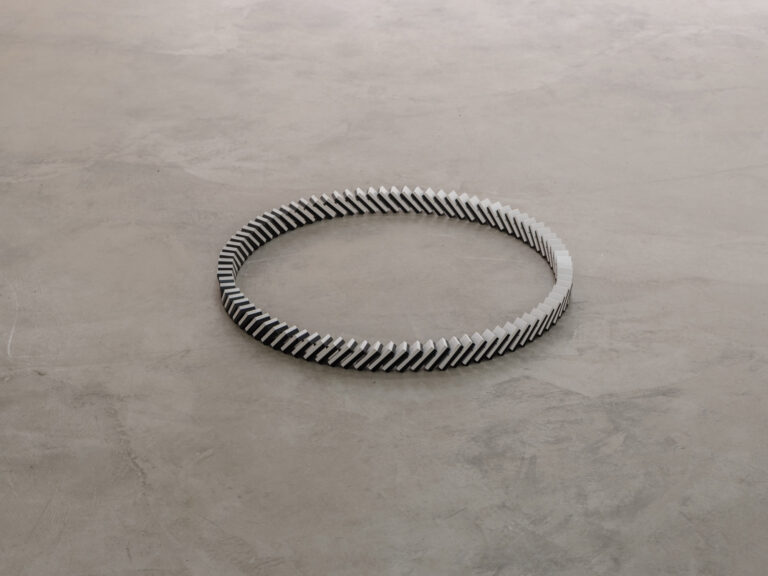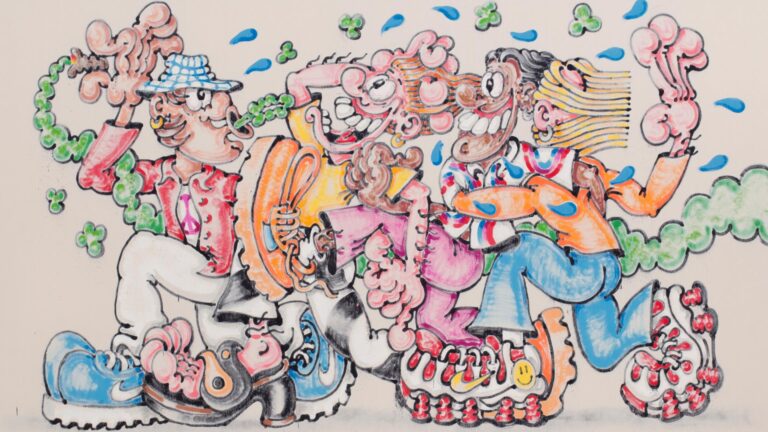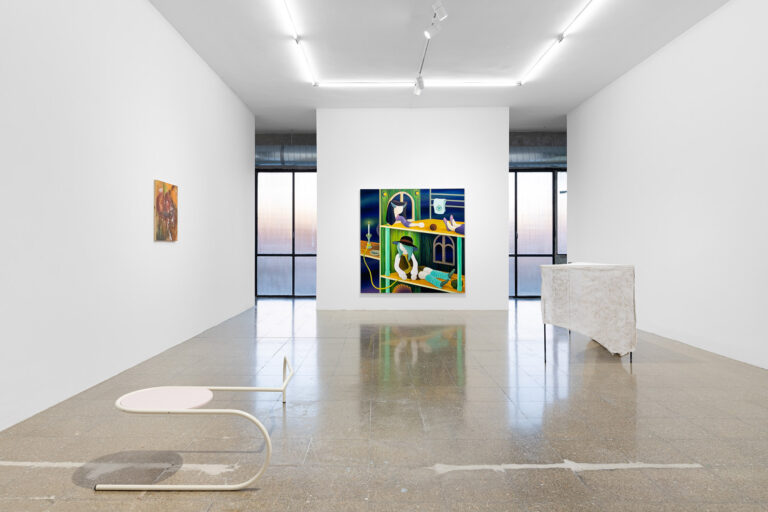Artist: Lucas Simões
Exhibition title: Inbound
Venue: Galería Pelaires, Mallorca, Spain
Date: September 21 – December 3, 2019
Photography: all images copyright and courtesy of the artist and Galería Pelaires
Galeria Pelaires is pleased to present Inbound, the first solo exhibition of Lucas Simoes in Mallorca as part of the programme of La Nit de l’art.
«The built environment is one thing, how people dwell in it another.» In Building and Dwelling: Ethics for the City (2019), Richard Sennet, just like already initiated in fundamental works such as Flesh and Stone (1997), keeps investigating how the body interacts with the city by focusing on those matters that affect it as a fundamental basis for the development of modernity and all circumstances defining the present as well as socioeconomic constraints in a post-capitalist society. In 2007, Mark Fisher wrote «My defences/become fences» out of resentment in one of his last texts on pre-Brexit Britain. And in 1974, Clarice Lispector wrote «There will be no room for people» referring to the city of Brasilia. Two different contexts more than four decades apart. However, the same issues persist. To build and to dwell, or how to interact with the city and ourselves in a highly complex environment.
Inbound. Travelling towards a particular place, especially when returning to the original point of departure is a body of work that Brazilian artist Lucas Simões has created specially for Pelaires Gallery. He examines the issues that arise from the way we dwell a particular space full of special features, in our case, an island, where the sea is the only boundary, the harsh horizon on which the city was built, as Clarice Lispector once wrote about Brasilia.
Drawing limits, delimiting spaces, dwelling in spaces, building experiences. While considering architects and town planners as the draughtsmen of the future and the idea of drawing (desenho/disegno) as what is yet to be built (destiny, lines, risk), Lucas Simões’ work keeps exploring what was once described as «the affective nature of shape» by Brazilian art critic Mário Pedrosa -one of the main instigators of modern art in Brazil.
As part of that genealogy associated with some of the most relevant artists in Brazilian modernity, Simões’ work, as already seen in projects such as Ressaca (2018), tackles in a poetical yet critical manner some of the notions of development which the welfare society has led us to, notions that lay on the edges and boundaries of our own cities.
Inbound is to be regarded as an evolution of his work. It is a site-specific installation where a forest of columns and piles combined with enclosing and isolating features (such as fences, barriers, mesh) are mixed with concrete (cement) to create a new environment, a temporary experience, a topology that may not be described as a home… just as a mere transit point, a space to go through, the idea that on the island «everything grows, vibrates and fits,» as Chillida once wrote about sculptures.
This installation has led to other works such as Chao (layer, stratum), a ground piece through which the artist approaches strata, a firm surface on which life and experiences are shaped. Moving objects vs. permanent surfaces. What changes vs. what remains. The future vs. the past that still breathes under our feet.
Paper, regarded as a fictitious place on which the future is shaped, and future constructions are drawn, reappears in Simões’ work. However, this time he doesn’t set paper against concrete as he did in the past in projects such as Abismos. This time, he uses other materials to build his “relevo dissecado” (dry reliefs), wall pieces with clear references to the topography itself, to erosion, to sudden drops and once more to the boundaries dividing what once belonged to all humankind.
Inbound. Paper as the material on which maps, designs and folds are drawn. Inbound. Concrete as the «constructed» reality of what before was only a possibility, the possibility of an island, of a city. As Sennet once wrote, the possibility of «how we would like to live together». Emergency vs. the isolation of a new community.
Text: Jesús Alcaide




